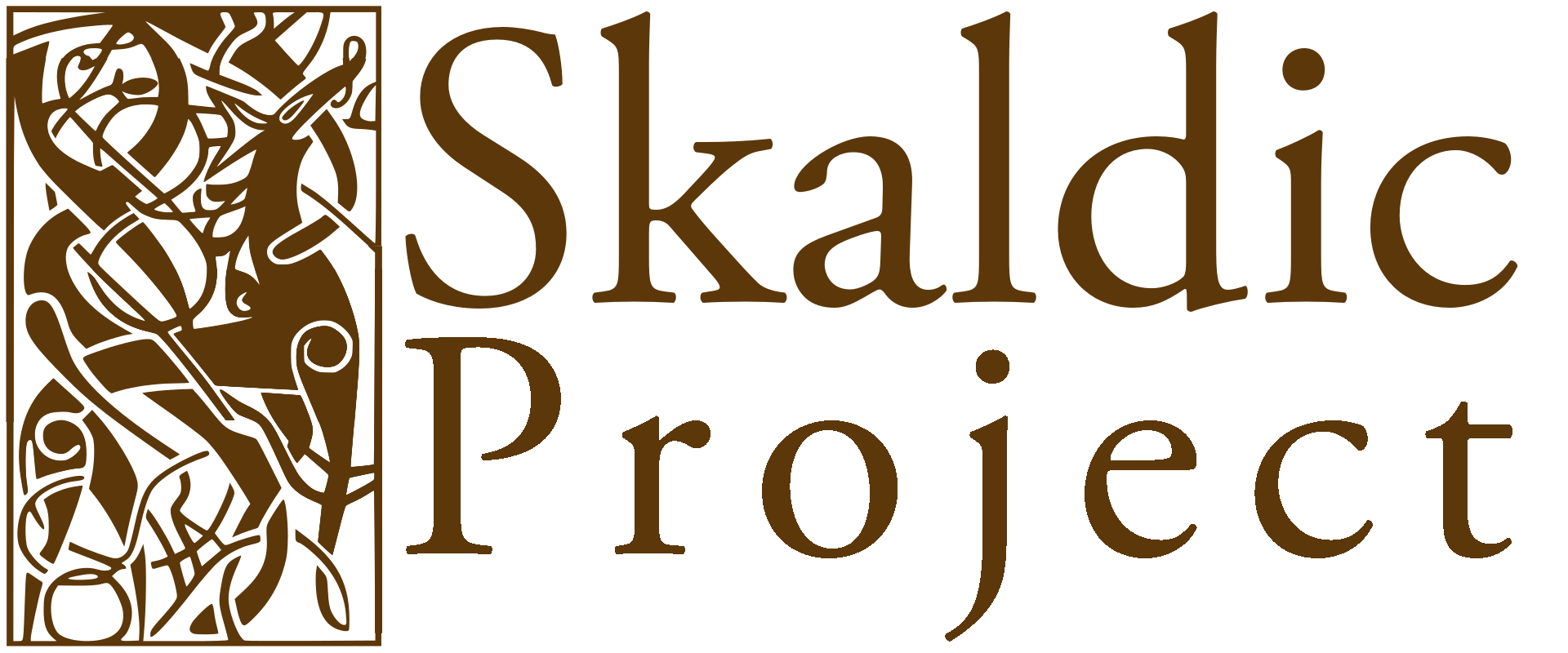Note to Bjarni Frag 1III
[3-4] hjǫrvi Heimdalls ‘the sword of Heimdallr <god> [HEAD]’: See also the similar kenning in Grett Lv 26/8V (Gr 58) and Note there. So far it has not been explained satisfactorily. Even Snorri’s remark (SnE 2005, 26) Heimdalar sverð er kallat hǫfuð ‘the head is called Heimdallr’s sword’ is more a statement than an explanation. This kenning, and the diverse information found in Old Icelandic literature concerning the deity Heimdallr, has led to a flood of theories and explanations which will not be discussed here. The most likely explanation to date is that Heimdallr was a god in the shape of a ram, or that he assumed the features of such a ram-god; cf. Þul Hrúts ll. 6, 8, where Heimdali and Hallinskíði, another name for the god, are both listed as heiti for ‘ram’ (see also Note to Glúmr Gráf 14/1, 2I). The kenning ‘sword of Heimdallr’ for ‘head’ would then correspond to the pattern ‘sword of the bull’ for ‘horn’ (a ram’s weapon is its head with which it butts an opponent). On Heimdallr as a god in the form of a ram, see Hellquist (1891, 172), Much (1930), de Vries (1935, 59; 1955, 260), Ohlmarks (1937, 147) and Lindquist (1937b, 98). It is impossible to establish whether such a ram-god was part of the Germanic pantheon, but such deities and cults are known from other parts of the world (see Schröder 1967, 15-16).
References
- Bibliography
- SnE 2005 = Snorri Sturluson. 2005. Edda: Prologue and Gylfaginning. Ed. Anthony Faulkes. 2nd edn. University College London: Viking Society for Northern Research.
- Hellquist, Elof. 1891. ‘Bidrag till läran om den nordiska nominalbildningen’. ANF 7, 1-62, 142-74.
- Ohlmarks, Åke. 1937. Heimdallr und das Horn. Heimdalls Horn und Odins Auge. Studien zur nordischen und vergleichenden Religionsgeschichte, 1. Buch (I-II). Lund: Gleerup; Copenhagen: Levin & Munksgaard.
- Schröder, Franz Rolf. 1967. ‘Heimdall’. BGDSL 89, 1-41.
- Lindquist, Ivar. 1937b. ‘Guden Heimdall enligt Snorres källor’. Vetenskaps-Societeten i Lund. Årsbok, 53-98.
- Much, Rudolf. 1930. ‘Der nordische Widdergott’. In Vogt et al. 1930, I, 63-7.
- Vries, Jan de. 1935. ‘Studiën over germaansche mythologie IX. De oudnoorsche god Heimdallr’. Tijdschrift voor nederlandsche taal- en letterkunde 54, 53-76.
- Internal references
- Alison Finlay (ed.) 2012, ‘Glúmr Geirason, Gráfeldardrápa 14’ in Diana Whaley (ed.), Poetry from the Kings’ Sagas 1: From Mythical Times to c. 1035. Skaldic Poetry of the Scandinavian Middle Ages 1. Turnhout: Brepols, p. 264.
- Jonathan Grove (ed.) 2022, ‘Grettir Ásmundarson, Lausavísur 26’ in Margaret Clunies Ross, Kari Ellen Gade and Tarrin Wills (eds), Poetry in Sagas of Icelanders. Skaldic Poetry of the Scandinavian Middle Ages 5. Turnhout: Brepols, p. 764.
- Elena Gurevich 2017, ‘ Anonymous, Hrúts heiti’ in Kari Ellen Gade and Edith Marold (eds), Poetry from Treatises on Poetics. Skaldic Poetry of the Scandinavian Middle Ages 3. Turnhout: Brepols, p. 890. <https://skaldic.org/m.php?p=text&i=3211> (accessed 5 June 2024)
